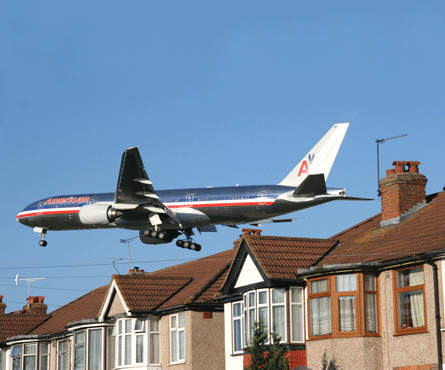MIME, a new research initiative funded by the European Commission's Sixth Framework Programme until the end of next year, is examining if it could be possible to free up environmental capacity at airports within a managed noise-annoyance framework, using a cap and trade approach.
Airport noise management schemes in force apply measures such as noise budgets, aircraft categorisation and noise routes that are often coupled with expensive noise charges or penalties for airlines.
Market-based mechanisms such as noise cap and trade using transferable permits could, however, provide improved control over environmental impact and still allow efficient business operations. MIME's scientific co-ordinator, Truls Gjestland from Norwegian research body Sintef, explains: "A noise cap-and-trade scheme might allow more effective, airline-specific solutions to be devised. In such a system, if an airline possesses permits for a certain amount of noise - more specifically "noise annoyance" - it could obtain the increased capacity it required, remaining within these limits, by using a mixture of tactics."
 |
|---|
© Max Kingsley-Jones/Flightglobal
|
These tactics could include varying fleet composition following improved operational procedures and optimised schedules, in addition to making better use of routes.
Alternatively, an airline could buy surplus permits from another that had cut its own noise, offering greater flexibility in achieving the most sustainable balance while meeting the needs of people living around airports.
FINANCIAL INCENTIVE
"Allowing noise permits to be traded within locally agreed noise limits could give airlines a positive financial incentive for good noise performance," says Gjestland.
As well as Sintef, the MIME consortium includes Envisa and the Eurocontrol Experimental Centre from France, the Institute for Transport Studies of the University of Leeds and Qinetiq from the UK, the National Aerospace Laboratory of The Netherlands and Germany's Technische Universität München.
The Eurocontrol Experimental Centre's Peter Hullah explains the unique requirements of a market-based mechanism for managing noise annoyance. "A permit-based system would need to be based on a linear index: n identical aircraft consuming n times the number of permits of one of them. This is a major step away from current cumulative noise indices that are logarithmic.
"The principle is that, at the beginning of a trading period, the airport or local authority would set a noise-annoyance value for one permit, based on the previous equivalent trading period - the total annoyance index divided by the total number of aircraft.
"Tables could allow operators to calculate how many permits they would require for the trading period, based on the average annoyance index for each aircraft type. If traffic and fleet are constant, there are the right number of permits issued and there's no need to trade. If an operator wants to increase their number of rotations, there would have to be an equivalent reduction in annoyance through other means. The permits freed up would be traded."
He says noise budget and quotas exist, but they do not allow the "good guys" to benefit.
"A few years ago, for example, noise budgets caused a major change in Schiphol airport runway usage. An airline operating a new fleet, quietly, was penalised to exactly the same extent as another one that flew noisy aircraft and which was responsible for pushing the airport over its noise budget. A noise cap and trade system would enable the 'good guys' to benefit and force the 'bad guys' to pay up."
The objective is to keep noise annoyance at a pre-defined level, but to allow growth within this, given that there will be some dynamic involved in technological improvement on aircraft noise levels. As opposed to the EU emission trading scheme, which is an open system, an airport noise annoyance trading scheme would need to work within a closed system.
"What we want to know is whether such a system would work economically - would trading actually happen? - and if so, how it would work best? What is the right level of permit allocation, the right level of granularity for a system to operate effectively?" Hullah asks.
"How can you take into account things that are essentially out of an operator's control - for example vectoring or tromboning, route changes depending on weather and traffic conditions that could stand to significantly change noise contours and the numbers of people affected.
"If you are trying to establish an annoyance permit system, how do you take that into account? The operator should not have to pay unduly for that level of unpredictability, but our studies may show that this kind of thing might 'even out in the wash'. Or it could lead some airports to decide that noise trading is not something that is feasible for them."
Such a system could prove complex, as noise modelling depends on aircraft configuration and thrust determined on the flightdeck - so every flight would have to be profiled. Aircraft noise modellers do not possess such data. "Our aim is research: to find out whether such a scheme could work, to specify what would be needed, or at least the approaches involved in the way it should be done," says Hullah.
Source: Flight International
















